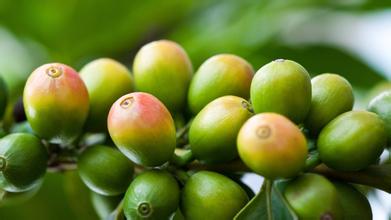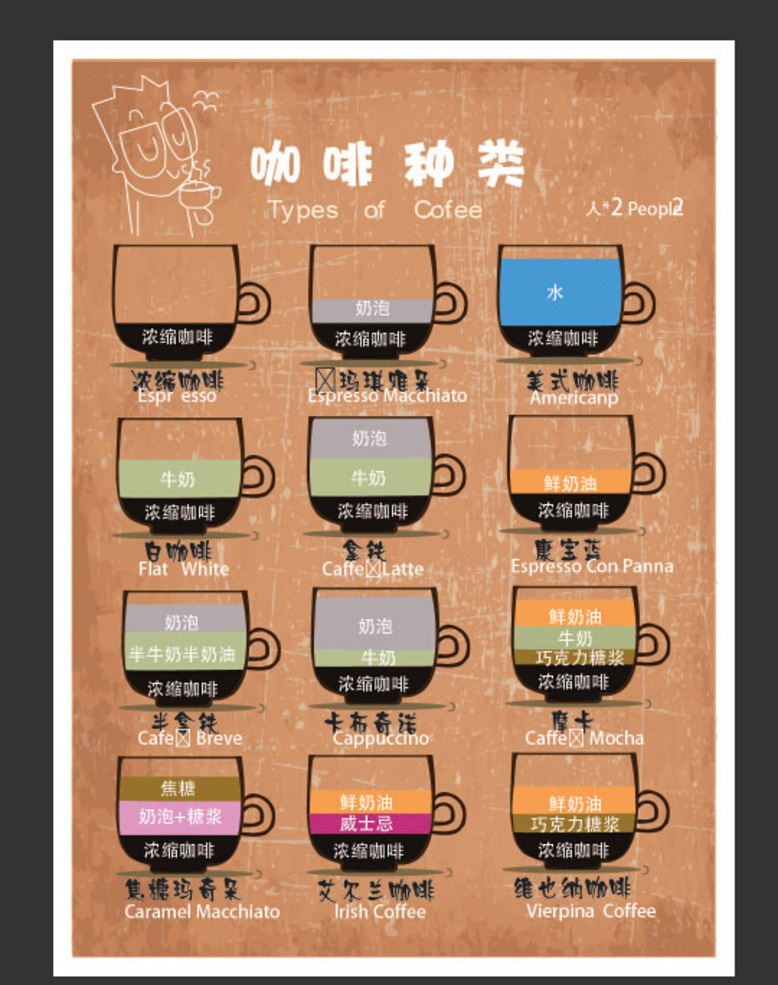The process of processing and fermentation of Ethiopian coffee by washing
The process of processing and fermentation of Ethiopian coffee by washing
In the process of washing, the peel and pulp of the fruit are treated with a special desizing machine and the coffee beans are peeled off. The coffee beans then enter the fermentation tank for fermentation treatment so that the mucous membrane is no longer sticky. The sugars in the mucous membrane are decomposed during fermentation. Depending on the fermentation method, the fermentation time is usually 12 hours to 6 days (some growers use the watering system to ferment coffee beans. This method is called the Kenyan washing method (Kenyan method) and usually lasts for several days). It is extremely important to decide when to stop fermentation. Once the coffee is overfermented, the taste of the coffee will become too sour. Once the sticky material in the mucous membrane is decomposed, it will be washed down with a lot of water. (the waste water from the raw bean treatment process is considered to be the source of pollution in the coffee industry. Today, advanced technologies are being developed in many areas to recycle and filter the waste water produced by this process. Water shampoo was born in the 19th century, also known as "wet processing".
A tightly controlled fermentation process increases the acidity of the coffee and is reflected in the final taste of the coffee. But as long as the coffee is washed immediately after the fermentation process, the taste of the coffee can be improved and has a bright sour taste.
Silver Skin/Chaff: there is a thinner film inside the parchment that wraps the coffee beans. Because the color is glossy and silvery, people used to call it "silver skin". This layer of silver will fall off during baking. Usually when you grind the coffee, you find some silver crumbs in the coffee powder. These crumbs are the silver-skinned coffee beans that fail to peel off the beans when roasted: each fruit contains two coffee beans (except for a single pod Peaberry. The fruit of this kind of coffee contains only one coffee bean. Normally, 5% of each batch of coffee beans is a single pod. Coffee beans can be roasted after drying and treatment. we know that the treatment of raw coffee beans can be divided into three types. The distinction between each method is based on the fact that several layers of matter are removed from the fruit before the coffee is dried. The following is a list of three major treatment methods: the use of water washing and fermentation to remove the peel, pulp and mucous membrane. This method is also known as the complete washing method (Fully Washed). Shampoo is the most common way for most coffee-producing countries in the world to handle Arabica coffee beans. Some areas also use advanced high-pressure washing machines to clean the peel, pulp and mucous membrane of coffee beans, so fermentation is no longer needed. This method of using a high-pressure washing machine to treat coffee beans is called "natural washing (Pulped Natural)".

Important Notice :
前街咖啡 FrontStreet Coffee has moved to new addredd:
FrontStreet Coffee Address: 315,Donghua East Road,GuangZhou
Tel:020 38364473
- Prev

Katim Blue Mountain Coffee Bean planting Environment and Flavor description the degree of Grinding in the region where the varieties are produced
Katim Blue Mountain Coffee Bean growing Environment Flavor description of the varieties produced in the region grind KARTIKA RED tall trees with bright red pointed leaves and long red cherries. It is generally a natural hybrid variety of iron pickup. Planting area Lake Toba, Aceh. The Netherlands brought this variety to be planted at high elevations on the island of Sumatra. After losing for a period of time, it is a lot.
- Next

Flavor description characteristics of Yega Snow Flavor in Ethiopia the taste of varieties produced by regional treatment method
The flavor description characteristics of Ethiopian Yejia Snow Flavor Variety processing method the taste of Yega snow caffeine has a strict standard for collecting red fruits (as a result of coffee trees). Before exposing the coffee fruit, the unripe green fruit or defective fruit is removed manually, and the damaged or moldy fruit is removed in the process of solarization. After two weeks, the flesh sugar and essence are all infiltrated into the coffee bean, and the water content is reduced to 12%.
Related
- Detailed explanation of Jadeite planting Land in Panamanian Jadeite Manor introduction to the grading system of Jadeite competitive bidding, Red bid, Green bid and Rose Summer
- Story of Coffee planting in Brenka region of Costa Rica Stonehenge Manor anaerobic heavy honey treatment of flavor mouth
- What's on the barrel of Blue Mountain Coffee beans?
- Can American coffee also pull flowers? How to use hot American style to pull out a good-looking pattern?
- Can you make a cold extract with coffee beans? What is the right proportion for cold-extracted coffee formula?
- Indonesian PWN Gold Mandrine Coffee Origin Features Flavor How to Chong? Mandolin coffee is American.
- A brief introduction to the flavor characteristics of Brazilian yellow bourbon coffee beans
- What is the effect of different water quality on the flavor of cold-extracted coffee? What kind of water is best for brewing coffee?
- Why do you think of Rose Summer whenever you mention Panamanian coffee?
- Introduction to the characteristics of authentic blue mountain coffee bean producing areas? What is the CIB Coffee Authority in Jamaica?

